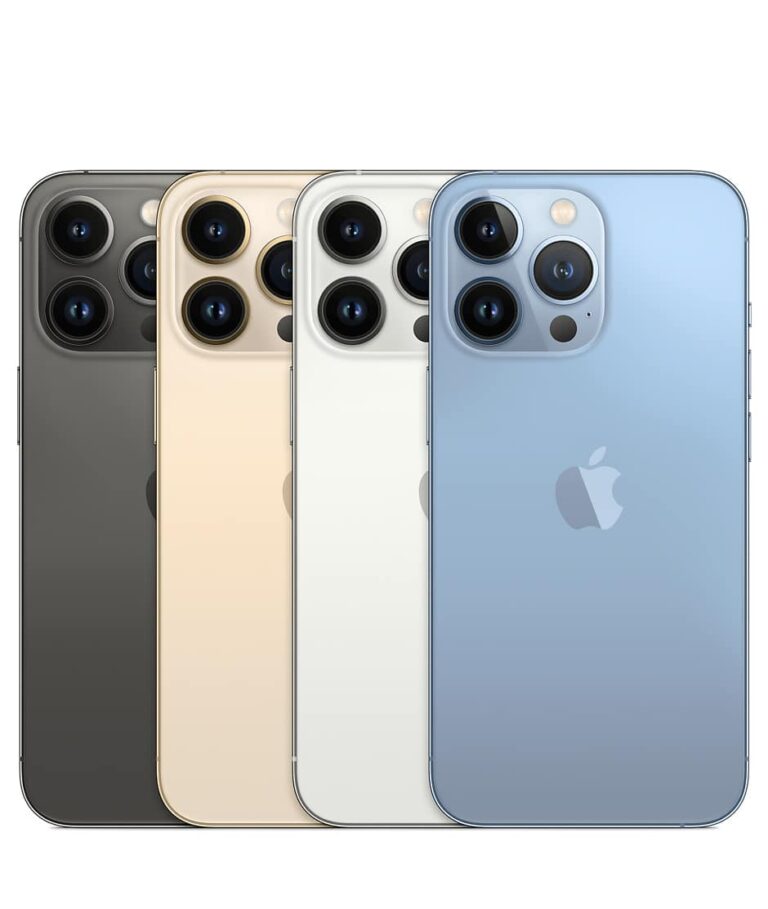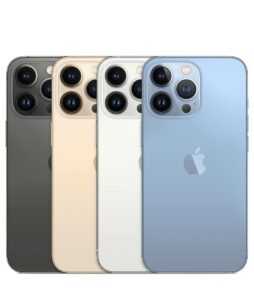The iPhone 13 Pro is certifiably not a significant change to the Apple formula. Yet it carries with it a couple of upgrades that might top your advantage. Like a smooth 120Hz display and, preferable battery life over past iPhone models. There are additional photography and video upgrades, and another 1TB-storage variation. The progressions from the iPhone 12 Pro are insignificant, yet if you own an iPhone 11 Pro, iPhone XS, or earlier, the iPhone 13 Pro Review makes a compelling case for being your next handset.
What we will see here?
Quick iPhone 13 Pro Review
- 6.1-inch OLED
- The 12-megapixel wide
- 12-megapixel ultrawide
- 12-megapixel telephoto
- No fingerprint sensor
- Refresh rates up to 120Hz
- Lidar scanner
- 5G enabled
- MagSafe
- Water resistant (IP68)
- Wreless charging
- Dual-SIM capabilities
- Smaller notch
- Featuring flat edges
Release date and price
The iPhone 13 Pro Review was unveiled by Apple on September 14 and is released on September 24, 2021. You would already be able to arrange the device on Apple’s website and from various third-party sellers.
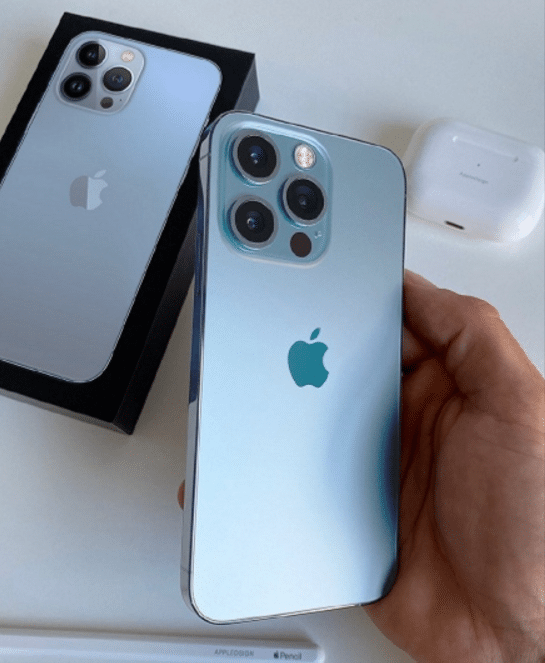
The price begins at $999/ £949/ AU$1,699 for the least expensive model with 128 GB of storage. If you need more storage you can explore a 256GB model at $1,099/£1,049/AU$1,869. A 512GB model at $1,299/£1,249/AU$2,219 or the 1TB assortment at $1,499/£1,449/AU$2,569.
This is whenever we’ve initially seen a 1TB iPhone, and that cost is correspondingly high. If you need an insignificantly higher-specced phone with a more noteworthy screen and battery, there’s in like manner the iPhone 13 Pro Max. It starts at $1,099/£1,049/AU$1,849.
Design and display

The iPhone 13 Pro Review is the association’s most top premium device yet that remembers a Max for the title and not the slightest bit like the iPhone 13 Pro Max, which is a more reasonable size for one-handed use. If you’re searching for a new, medium-sized iPhone, this handset, or the iPhone 13, should suit you impeccably.
Apple’s design has been refining from the iPhone 12 Pro, however, the differences are restrict.
It accompanies stainless steel edges, a matte completion on the back, and Apple’s Ceramic Shield glass on the different sides. Apple says that protection makes it four times doubtful to smash when compared with an iPhone without the technology.
The iPhone 13 Pro and iPhone 13 are almost indistinguishable in size.
The right-hand edge of the handset houses the power button, while the left-hand side is home to the mute slider, volume buttons, and SIM plate. On the bottom edge of the handset are the speakers, and a Lightning port for charging.
Like the iPhone 13, the iPhone 13 Pro near with a 6.1-inch Super Retina XDR OLED display.
This features the best pixels-per-inch rating of the whole iPhone 13 range at 460ppi, and the image quality looks crisp.
A significant update from Apple here is the presentation of a 120Hz most prominent refresh rate, which implies the on-screen picture invigorates 120 times each second for a more fluid encounter. It’s a variable refresh rate, which is naturally adjusted relying upon which apps you’re using. For instance, most games will use a 120Hz refresh rate, while if you’re reading an e-book the rate could drop as low as 1Hz.
The thought here is to save on battery life when you’re using apps that don’t profit from the high refresh rate. We’ve tracked down the new screen tech works well so far. Apple has also decreased the size of the score on the iPhone 13 Pro. No, there’s still no under-display camera. However, the notch here is 20% smaller, which means you have somewhat more screen real estate to work with.
Camera and Battery

The camera arrangement on the iPhone 13 Pro Review contains three 12MP shooters: the major wide camera with an f/1.5 hole, a telephoto camera with an f/1.8 opening that is capable of 3x optical zoom, and a super-wide camera with an opening of f/1.8 and 120-degree field of view.
There’s also a 3D LiDAR scanner element, which is used to measure depth and further develop elements like the bokeh effect where Portrait mode will blur the background around a subject.
We have the new macro mode on the iPhone 13 Pro Max.
The phone supports fast charging to 20 watts which should have the option to charge the phone from empty to full in just 60 minutes.
That is not the fastest charging we’ve seen in a smartphone. Some of the latest Android handsets are hitting 120W or much faster – however, it’ll be fine for most users. Note, however, that there’s no charger in the box as Apple continues to take up arms against e-waste. So you’ll need to purchase a charger or use an existing one.
There is also wireless charging on the iPhone 13 Pro at up to 15W when using Apple’s MagSafe chargers.
Specs and performance
Like all the new iPhones, the iPhone 13 Pro runs on Apple’s A15 Bionic chipset, which the company claims is the best available in the market right now.
You have the decision of 128GB, 256GB, 512GB, or 1TB of storage on the iPhone 13 Pro. We wouldn’t suggest going for the 1TB choice unless you truly think you need that additional space. For instance, if you shoot a lot of videos – and numerous users could discover 128GB a bit limiting. However, most people will be all around served by one or the other or those two centre options.
The iPhone 13 Pro is 5G-prepared, and you’ll have the option to use the next-gen association standard as long as your plan supports the technology and you’re in a space that has coverage.
Sizes
Like the iPhone 12 Pro models, the iPhone 13 Pro models come in 6.1 and 6.7-inch sizes, with the 6.7-inch iPhone 13 Pro Max composed as Apple’s most basic iPhone. iPhone 13 Pro and Pro Max are thicker than the iPhone 12 Pro models and are additionally somewhat heavier.
The iPhone 13 Pro measures 5.78 inches tall (146.7mm), 2.82 inches wide (71.5mm), and 0.30 inches thick (7.65mm), while the iPhone 13 Pro Max checks in at 6.33 inches tall, 3.07 inches wide, and 0.30 inches thick.

The iPhone 13 Pro-weight is 7.19, and the iPhone 13 Pro Max weighs is 8.46.
Colours
The iPhone 13 Pro models come in various colours, like, Graphite, Gold, Silver, and Sierra Blue. Sierra Blue is a lighter blue colour that replaces the Pacific Blue shade from a year ago.

Water Resistance

The iPhone 13 Pro and Pro Max include an IP68 water-resistant rating. The cell phones can withstand a profundity of up to six meters for up to 30 minutes, indistinguishable from the iPhone 12 Pro models.
In the IP68 number, the 6 alludes to dust obstruction (and means the iPhone 13 Pro can hold up to dirt, dust, and various particulates), while the 8 identifies with water resistance. IP6x is the most noteworthy dust resistance rating that exists. With the IP68 water resistance rating, the iPhone 13 Pro can hold up to sprinkles, rain, and accidental water openness, yet intentional water exposure ought to be kept away from it if conceivable.
Water and dust resistance are not super durable conditions, as indicated by Apple, and can break down over the long run because of ordinary wear. Apple’s guarantee doesn’t cover liquid damage, which implies it’s ideal to utilize caution with regard to liquid exposure.
Smaller Notch
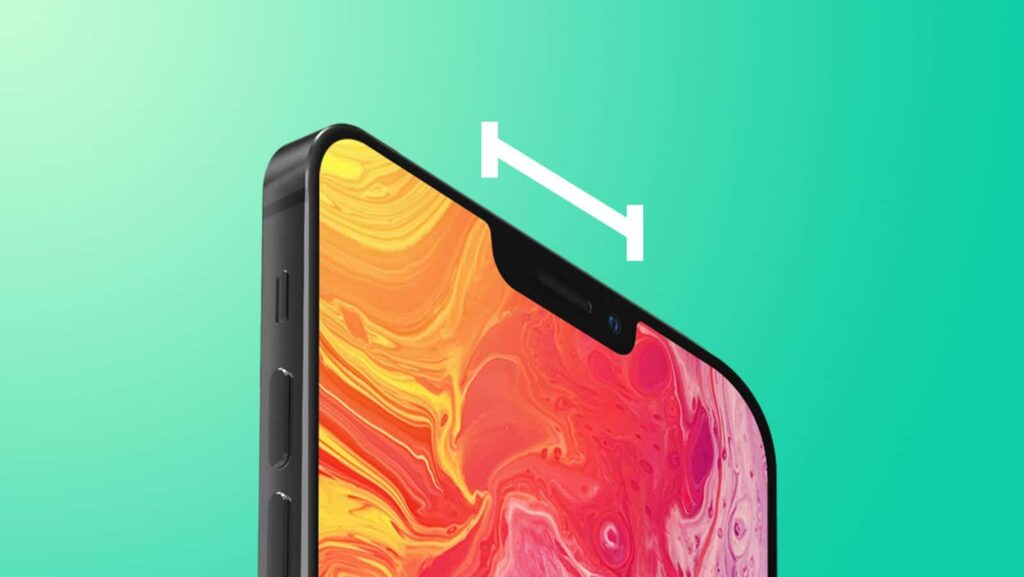
Apple slimmed down the notch that houses the TrueDepth camera system, and it’s 20% less wide than the notch utilized in earlier iPhone models. Assessments between the iPhone 12 and iPhone 13 have certified that anyway less wide, the new notch is fairly taller than the previous notch.
Anyway, Apple has contracted the width of the notch to offer more screen space, iOS doesn’t appear, apparently, to take advantage of that extra region. There is enough space to display battery percentage on the right half of the notch on the bigger iPhone 13 Pro Max, however, it’s anything but an included display highlight.
ProMotion
The iPhone 13 Pro models have low-power display backlighting illumination that has permitted Apple to carry out ProMotion technology interestingly. At first, presented in the iPad Pro in 2018, ProMotion offers versatile refresh rates ranging from 10Hz to 120Hz.

The refresh rate of the display changes depending on what’s on the screen. So in case you’re reading a site that is static, the iPhone will utilize a lower refresh rate, yet in case you’re playing a game, watching a movie, or looking through content, you’ll see higher 120Hz refresh rates that give a smoother and more responsive experience.
A15 Bionic Chip
All of the iPhone 13 models utilize Apple’s new A15 chip, which offers execution and proficiency upgrades over the A14 chip utilized in the iPhone 12. Apple calls the A15 chip in the iPhone 13 Pro models the “world’s speediest cell phone chip” with two execution centres and four capability centres.
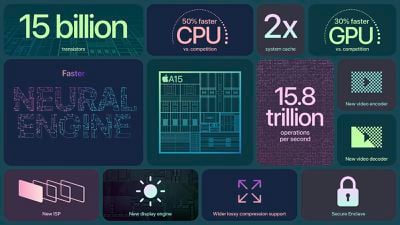
The A15 chip in the iPhone 13 Pro and Pro Max includes a 5-core GPU, which is one extra GPU centre that is accessible in the standard iPhone 13 models. Apple says that the iPhone 13 Pro models offer up to 50% quicker graphics execution than some other smartphone chips. Nearly, the iPhone 13 models offer 15% quicker graphics execution.
With regards to the CPU, all of the iPhone 13 Pro Review models offer similar capabilities and are approximately 10% quicker in single-core execution and approximately 18% quicker in multi-core performance compared to the iPhone 12 models.
Neural Engine
The 16-core Neural Engine can perform up to 15.8 trillion assignments each second, and it powers features like Cinematic Mode and Smart HDR 4.
RAM
The iPhone 13 Pro Review models have 6GB RAM, while the iPhone 13 models have 4GB RAM. RAM has not transformed from the iPhone 12 to the iPhone 13, and the iPhone 12 and 12 Pro models likewise had 4GB and 6GB RAM, individually.
Storage Space
All iPhone 13 models start with 128GB of storage, and the iPhone 13 Pro and Pro Max can be requested with up to 1TB storage space, which is another most extreme.
TrueDepth Camera and Face ID
For biometric verification purposes, the iPhone 13 Pro and Pro Max use Face ID, the facial recognition system that was first presented in 2017. Face ID components are housed in the TrueDepth camera system in the display notch, which is more modest this year.
This is used across iOS assignments for opening the iPhone, allowing permission to third-party password ensures apps, insisting app purchases.
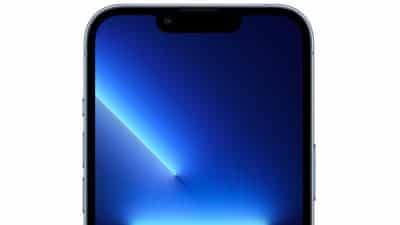
Face ID works through a lot of sensors and cameras. A Dot Projector stretches out more than 30,000 imperceptible infrared spots onto the outer layer of the skin to make a 3D facial scan that maps the bends and planes of every face, with the output read by an infrared camera.
The facial profundity map is given off to the A15 chip where it is changed into a mathematical model that the iPhone uses to validate character. Face ID works in low light and in the dark, and with hats, beards, glasses, shades, scarves, and different accessories that somewhat dark the face.
For facial masks, which don’t work with Face ID, there’s an “Open with Apple Watch” include for convenience. Unlock with Apple Watch allows iPhone users to take advantage of an opened and validated Apple Watch as an optional verification measure to open their devices when wearing a mask. It can’t be utilized to validate Apple Pay or App Store purchases, and it can’t open apps that require a Face ID scan. In these circumstances, a mask should be taken out or a password should be utilized all things considered.
Camera Features
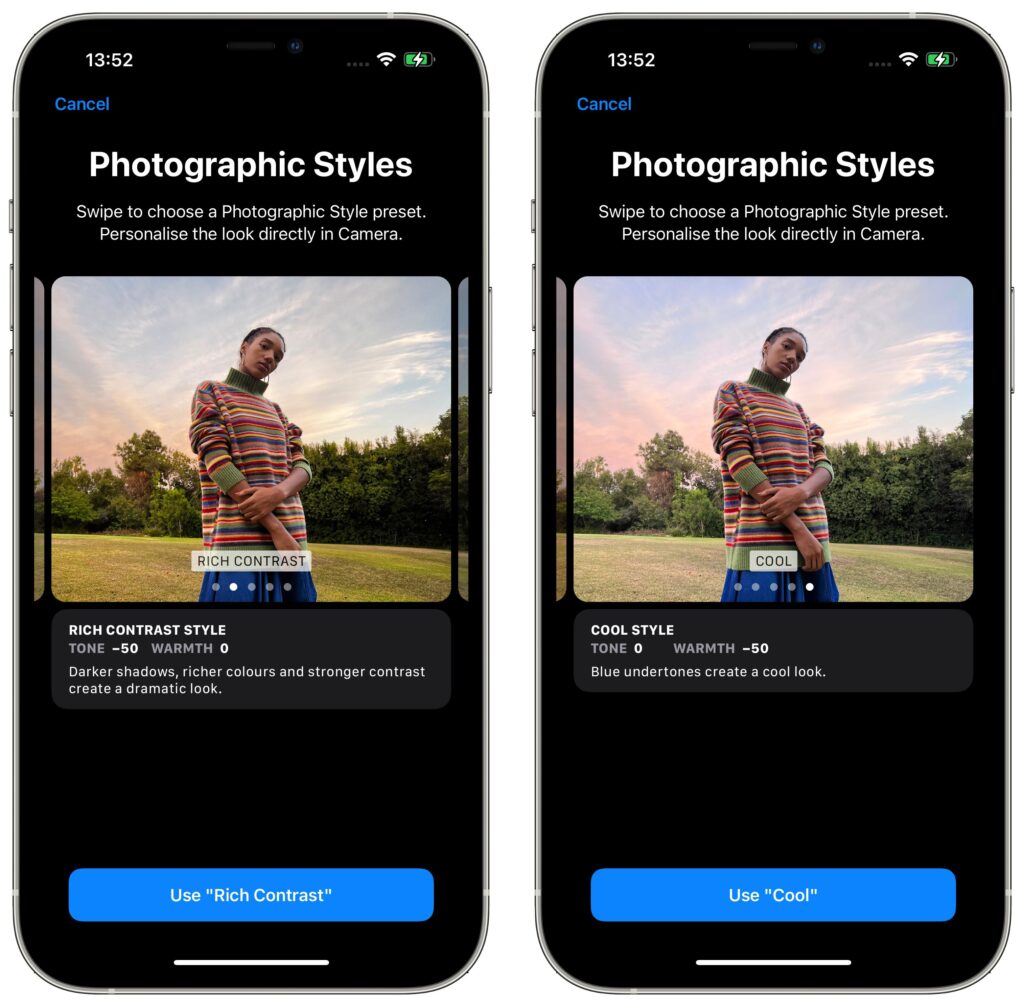
- Macro Photography -The Ultra-Wide camera on the Pro models can amass at 2cm, which makes it ideal for full-scale photos. You can take full-scale photos or large-scale videos, including slow motion and time-lapse.
- Brilliant HDR 4 -Recognizes up to four people in a scene and streamlines contrast, lighting, and even skin tones for every person so everybody puts their best self forward.
- Photographic Styles -Photographic Styles are keen, movable filters that can do things like a lift or quiet colors without influencing skin tone. Styles apply specifically to a picture, dissimilar to a filter that is applly to the whole picture. Photographic Styles incorporate Vibrantly, Rich Contrast (darker shadows), Warm (complements golden undertones), or Cool (emphasizes blue undertones). Tone and Warmth are adjustable for each style, so you can get the specific look that you need.
- Night Mode -Takes a progression of pictures over a couple of moments and totals them together to take into consideration photography in extremely low lighting circumstances. Night Mode on the Pro models works with Portrait Mode due to the LiDAR scanner, and with all of the three focal points.
Some More!
- Deep Fusion -Works in mid to low lighting conditions and draws out the surface and detail in the picture.
- Portrait Mode – Keeps the subject of the photo in the center while obscuring the background.
- Portrait Lighting -Changes the lighting of Portrait Mode photos with impacts that incorporate Natural, Studio, Contour, Stage, Stage Mono, High‑Key Mono.
- True Tone flash -True Tone flash is the built-in blaze, and it is intended to coordinate with the surrounding lighting so it doesn’t lose the white balance of the photo when utilize.
- Panorama -Captures all-encompassing shots up to 63 megapixels.
- ProRAW -Lets users catch proficient-looking photos utilizing the ProRAW design.
- Burst Mode -Allows a progression of pictures to be captured at the same time, which is useful for high-action shots.
5G Connectivity
The iPhone 13 models, similar to the iPhone 12 models, support 5G networks LTE networks. The 5G modems in the device work with both mmWave and Sub-6GHz 5G, which are the two sorts of 5G, yet mmWave speeds keep on being restrict to the United States.
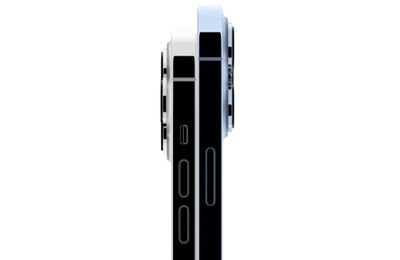
mmWave 5G networks are the quickest 5G networks, yet mmWave is short-range and can be obscured by structures, trees, and different obstacles, so its utilization is restricted to significant cities and urban areas alongside venues like concerts, airports, and different spots where many individuals gather.
Sub-6GHz 5G is more widespread and accessible in urban, suburban, and country regions across the United States and different nations. Generally, when you utilize a 5G network, you’ll utilize Sub-6GHz 5G. Sub-6GHz 5G is for the most part quicker than LTE, however, it’s actually evolving and it’s not the very quick 5G you may be anticipating.
5G connectivity takes into account quicker download and upload speeds, which speeds up everything from loading websites to downloading TV shows and movies. It additionally builds transfer speed for streaming services so you can watch in a higher resolution, and it brings further developed FaceTime call quality. Over 5G or WiFi, FaceTime calls go in 1080p. In regions where LTE speeds are slow a direct result of the sheer number of people, 5G free up bandwidth and reduces congestion for quicker utilization speeds.
Dual SIM Support
Dual-SIM support permits two phone numbers to be utilized at one time, enabled through the consideration of a physical nano-SIM space and an eSIM.
eSIM’s usefulness is accessible in numerous countries all throughout the planet, and Apple has a list of carriers that help eSIM on its site.
The iPhone 13 models are the first with Dual eSIM support, which implies the iPhone 13 models can utilize two eSIMs all the while instead of only one eSIM and one nano-SIM. Apple’s iPhone 13 models associated with a transporter will not deliver with an actual SIM card this year. And transporters will rather use eSIM abilities for enactment.
Other Features
Speakers
The iPhone 13 Pro models have a sound system speaker at the top where the score is found and a second sound system speaker at the bottom next to the Lightning port.
Sensors
The iPhone 13 Pro models are furnished with a barometer, three-pivot gyroscope, accelerometer, closeness sensor, and an encompassing light sensor.
GPS and NFC
The iPhone 13 models highlight support for GPS, GLONASS, Galileo, QZSS, and BeiDou area services. NFC with reader mode is incorporate, and there’s a background label include that permits the iPhone models to scan NFC labels without the need to open an app first.
Conclusion
The iPhone 13 Pro Review isn’t an enormous step up from the iPhone 12 Pro. However, if you own an older iPhone you might track down that this is the best handset for you to move up to in 2021.
The iPhone 13 Pro Max has more to suggest if you like a bigger phone, while the iPhone 13 is there for those who need something a touch less expensive. If you’re someplace in the centre of those two handsets, the iPhone 13 Pro seems to be a solid choice. If not a particularly intriguing handset with regards to terms of design and new provisions.
The iPhone 13 Pro doesn’t offer enough novelties to justify an upgrade from the iPhone 12 Pro. However, it still seems to be one of the most mind-blowing smartphones of 2021.


